The Samsung Galaxy S6 and S6 edge Review
by Joshua Ho on April 17, 2015 9:00 AM EST- Posted in
- Smartphones
- Samsung
- Mobile
- Galaxy S6
- Galaxy S6 Edge
System Performance Cont'd: GPU Performance
As previously mentioned, the Galaxy S6 uses a Mali T760MP8 clocked at 772 MHz, which should provide a healthy improvement in GPU performance over the Exynos 5433. To test this, we run through our standard suite of game-style GPU benchmarks. However, there are still some CPU benchmarks present within these tests such as the 3DMark physics test. In general though, a strong GPU is needed to perform well in these tests. For those interested in an architectural deep-dive of the Mali T760, I would refer to Ryan’s article on the Midgard architecture for more information.
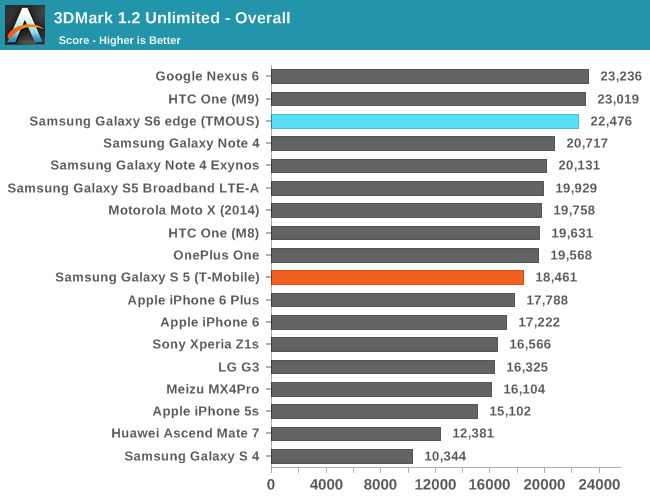
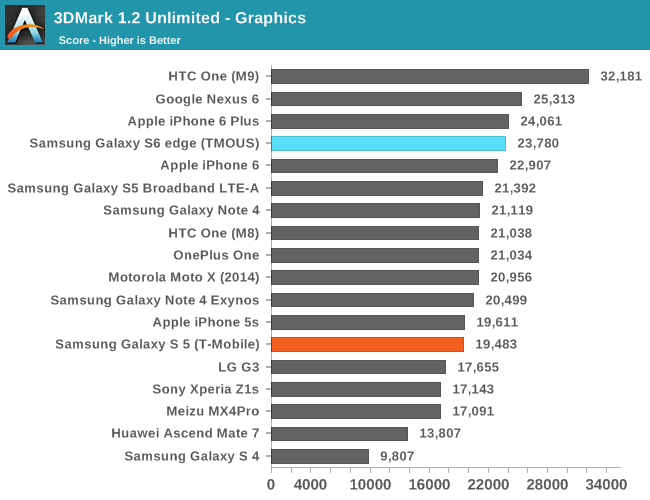
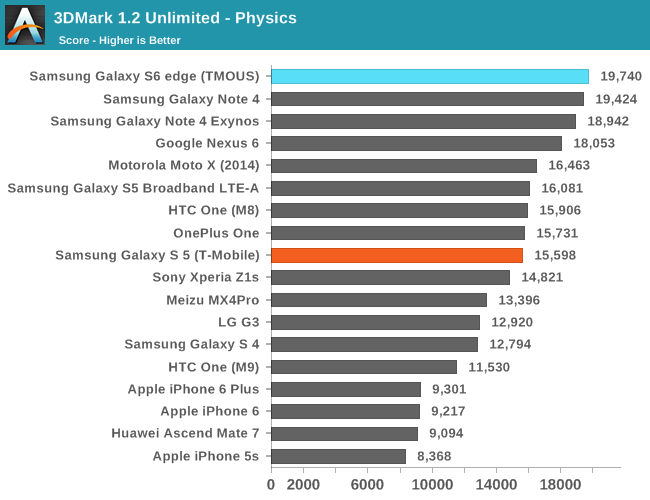
The Galaxy S6 starts out fairly strong in 3DMark. Overall performance is boosted by a chart-topping physics score, while pure graphics performance trails a bit. In this case the S6 is roughly on par with the iPhone 6 Plus, but would have to close quite a gap to catch up to the HTC One (M9).
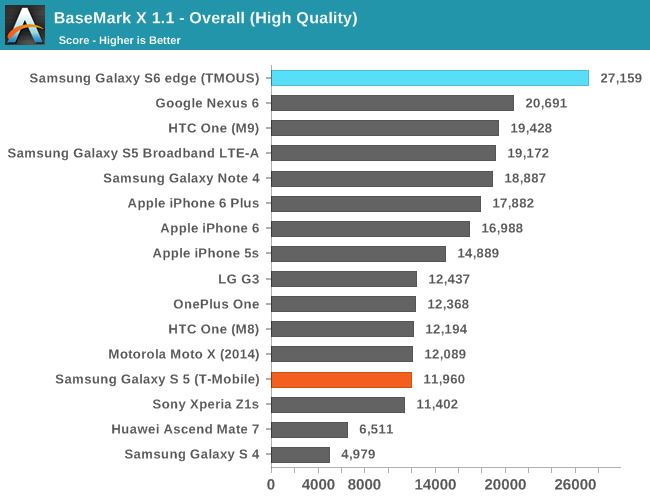
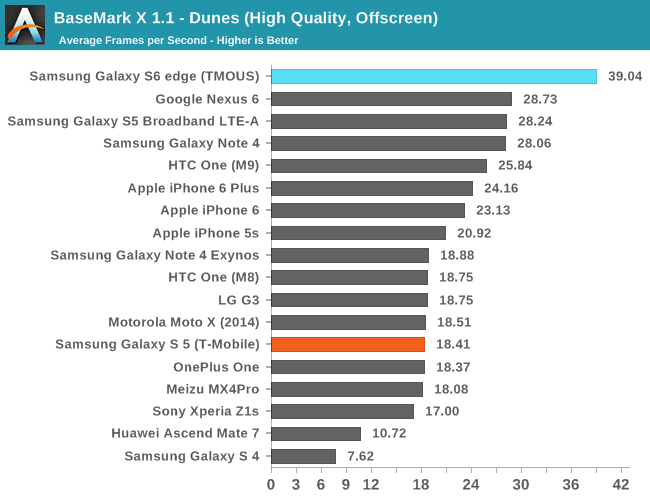
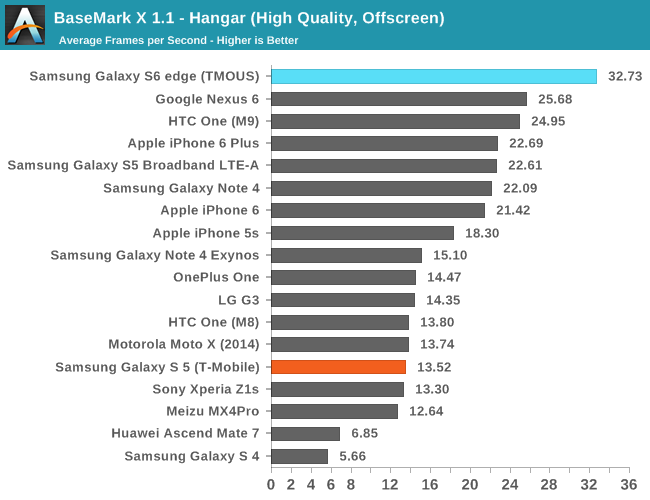
BaseMark X finds the S6 the runaway winner. The phone is well ahead in both the Dunes and Hangar test, beating the next-best phones (primarily Adreno 420/430 based) by 25% or more depending on the test. The increase over the S5 is especially remarkable; Samsung has more than doubled their performance in this benchmark in barely a year.
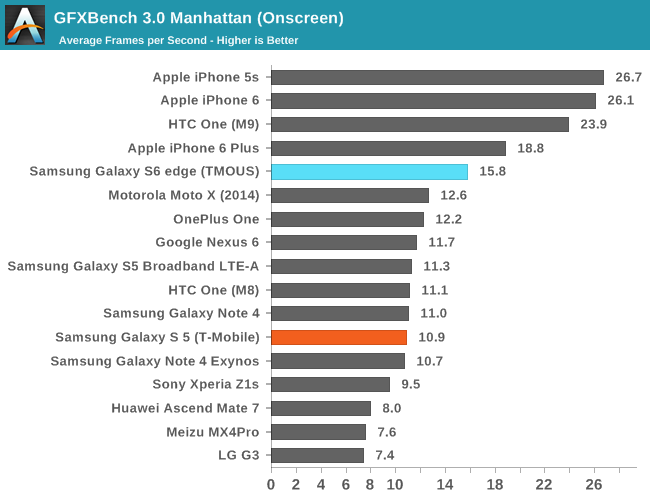
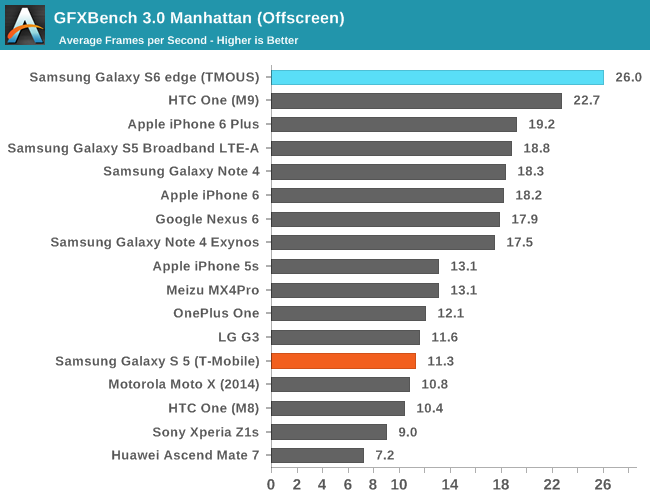
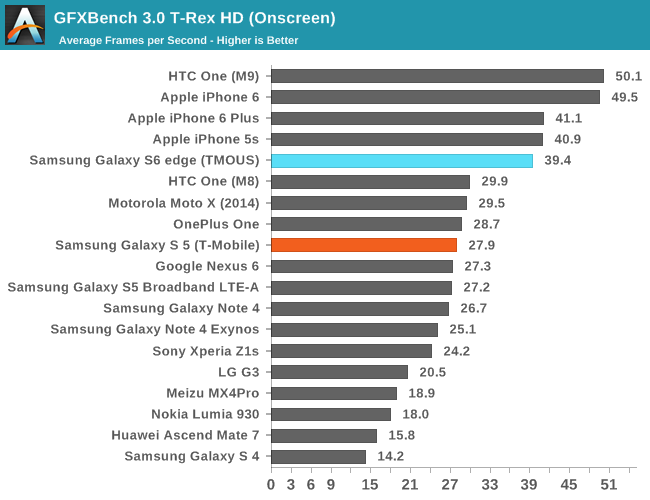
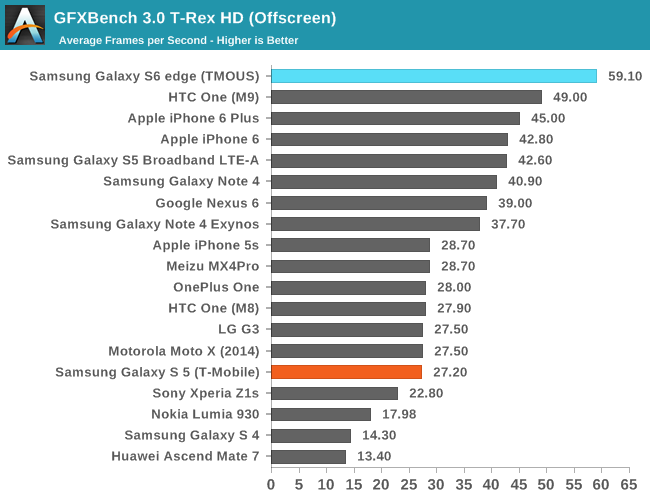
GFXBench 3.0 is another strong showing for the S6. In both offscreen tests it's 15% or more ahead of the next closest phone, which is once again the HTC One (M9). Meanwhile compared once more to the S5, Samsung's performance has more than doubled. Consequently even the onscreen tests show significant gains, as the GPU performance gain more than outstrips the additional performance required to drive the higher resolution 1440p AMOLED display of the S6.
Overall, as we can see the performance of the S6 is in line for what is expected from its Mali T760MP8 configuration. Interestingly though the phone's performance exceeds the scaling we'd expect from adding two shader cores and increasing frequency to 772 MHz, as compared to the Exynos 5433-powered Note 4 Exynos. This suggests that the Exynos 5433's GPU was bandwidth-limited to some extent, in addition to any possible thermal throttling that would occur over the course of a GFXBench run. But I suspect we'll have to save the deep dive for a future article as I can't take the review unit apart to find out.










306 Comments
View All Comments
h3ck - Friday, May 8, 2015 - link
Because even though media, books, music and other content is cloud based and easy to access, applications are getting increasingly larger and you still want to have space for local content in general. I went with the 64GB myself, but I also use a Dash Micro. If you don't know what that is, it's amazing > http://www.amazon.com/Dash-Micro-MicroSD-Android-U...elchepe - Saturday, May 23, 2015 - link
I don't know what world you're living in, but most people take cheap loads of pictures and videos these days. Considering the megapixel count on the S6 and other flagship, expandable memory certainly becomes a necessity. There are plenty of people who know the woes of being unable to update their iPhones because there's not enough space available.deputc26 - Friday, April 17, 2015 - link
I would like to see an APL vs. Brightness graph for maximum manual brightness. Using 100% APL unjustifiably biases the test against AMOLED screens. 60-80% APL would correspond much better to real world scenarios.Brett Howse - Saturday, April 18, 2015 - link
Check the display page again.deputc26 - Saturday, April 18, 2015 - link
"Manual" brightness, not automatic. I checked the display page again and was disappointed.melgross - Saturday, April 18, 2015 - link
The problem amoled has, is if brightness remains too high for too long, the display will burn out after a time. The real max brightness is around 350nits, the same as before. In fact, Samsung is taking a big chance with the max brightness here. I predict that we'll be seeing display life significantly shortened for a number of people who spend a lot of time outdoors with their phones.The life of all LEDs is directly dependent on their temperature. Amoled needs low temps to work, unlike metal based LEDs, used for LCD screen back lights. Their innefficiency means that a lot of power is required for maximum brightness, which leads to overheating. That's why manual brightness on these is the same its been for the last three generations.
Brett Howse - Saturday, April 18, 2015 - link
@deptuc26: So you are concerned about 100% APL being biased against AMOLED but want to see the manual brightness where the scores are lower? I'm confused. You seem to contradict yourself there.melgross - Saturday, April 18, 2015 - link
No, not at all. I'm pointing out that while Samsung has a new brightness setting for outside, you can't use it for regular use. That because using it more than occasionally will damage the display. This is like redlining a car engine. You can do it, but don't do it too often.deputc26 - Saturday, April 18, 2015 - link
Values for both Manual brightness and automatic brightness are given at 100% APL in charts in the review. This is unrealistic, no one walks around with a pure white screen. The review partially makes up for this error by including a "APL vs brightness" graph for automatic brightness. It does not include such a graph for manual brightness leaving the attentive reader wondering what the brightness would be at a realistic APL and leaving the inattentive reader with a false impression.Uplink10 - Saturday, April 18, 2015 - link
Because then people would not buy 64GB or 128GB phones which are very overpriced. They would just buy 32GB/16GB phone and additional MicroSD card. Why? Because of greed.